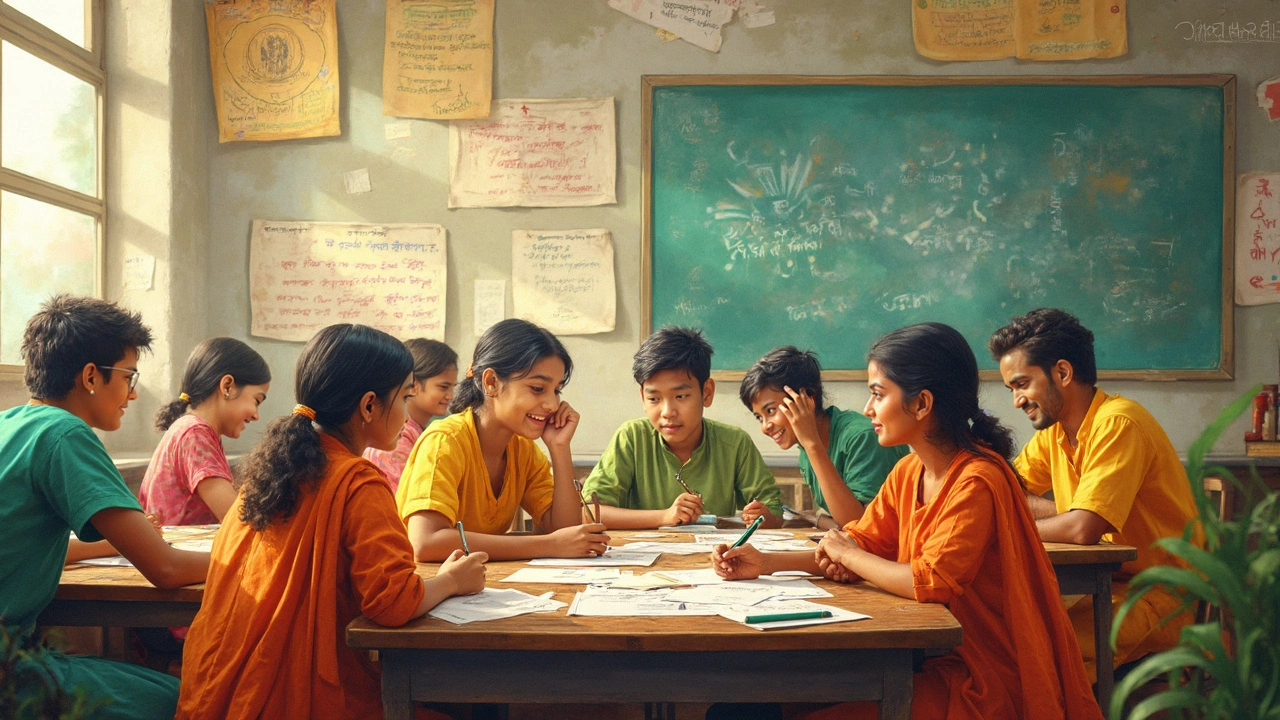
Choosing where to study can be a tough decision, especially when it comes to two giants like India and the USA. Both have their own quirks and strengths, making it a bit of a puzzle to decide which one fits better for your educational goals. Let's unravel a bit of it together.
India's education system is well-known for its rigorous focus on subjects like math and science. If you're the kind of person who gets a kick out of solving complex equations or understanding the nuts and bolts of a circuit, the Indian system might just be your match. The emphasis on discipline and hard work can sometimes feel intense, but it often results in a strong grasp of technical subjects.
The USA, on the other hand, takes a different approach. There's a lot more encouragement to explore personal interests and think outside the box. Creativity and critical thinking take center stage in American classrooms, and if you're someone who thrives on engaging discussions and projects that allow you to express yourself, this could be your playground.
The Indian Approach
When it comes to education in India, the focus is often on building a rock-solid foundation. Schools emphasize subjects like math and science right from the early years, setting up a challenging yet rewarding academic environment. The CBSE, or Central Board of Secondary Education, plays a major role in shaping the country's curricular standards.
Focus on Rigor and Discipline
The typical school day in India is structured and packed with lessons. There's a strong emphasis on discipline and routine, which some say helps students learn to manage time well and develop perseverance. Many students undergo regular assessments, which keeps them on their toes and often leads to impressive academic results.
The CBSE Syllabus
The CBSE syllabus is widely recognized for its comprehensive and structured design. Not only does it cover core subjects extensively, but it also encourages students to participate in extracurricular activities, ensuring a more rounded education. The board's examination system is highly standardized, which means students compete at a national level, preparing them for some of the toughest competitive exams in the world.
Here's a small overview of the subjects tackled by CBSE's curriculum at secondary level:
| Subject | Grade |
|---|---|
| Mathematics | 6-12 |
| Science | 6-12 |
| English | 6-12 |
| Social Sciences | 6-10 |
Pros and Cons
On the one hand, India's education system can produce students with fantastic capabilities in technical subjects. Many graduates excel in global fields like engineering and IT. However, some argue that the heavy focus on rote learning and exams might stifle creativity and practical exposure.
It boils down to what you're looking for in an education. If you thrive under structure and a high level of academic rigor, the Indian system could be a perfect fit.
The American Style
When we talk about education in the USA, individuality and creativity often steal the show. The system is designed to prepare students not only academically but also in a way that allows them to think on their feet. Schools here create an environment where students aren't just passive learners but active participants in their education.
One thing that really stands out in American schools is the focus on fostering curiosity. Instead of drilling concepts, teachers use project-based learning to encourage exploration and hands-on experience. Let's say you're studying biology. Instead of just learning about plant cells through books, you could be out in a garden, understanding it in real-time. This practical approach is often a hit with students who love to learn by doing.
Flexible Curriculum
Another highlight is the flexibility in the curriculum. Students often get to choose electives based on their interests. Want to take up film studies alongside physics? You can do that. The idea is to let students explore various fields without being boxed into a narrow path too soon.
As for the CBSE syllabus comparison, the American system doesn’t strictly follow a centralized curriculum like India. It varies by state and sometimes even by district, offering a broader, more adaptable learning experience. This can be a blessing if you’re someone who enjoys variety in learning methods.
Engagement and Extras
And it's not all books and lectures. Extracurricular activities hold a significant stake. Sports, arts, clubs, and volunteering opportunities complement academics. These activities build a more rounded personality, developing teamwork and leadership skills.
- Encourages creativity and innovation.
- Flexible curriculum allowing exploration of interests.
- Focus on engagement through extracurriculars.
- Project-based learning enhances practical knowledge.
This whole style not only educates but also equips you with skills for real-world challenges. Whether you're into strong academics or exploring a mix of skills, the USA offers a vibrant landscape to learn and grow. It's all about finding what resonates with you and making the most of it!

CBSE Syllabus Relevance
The CBSE syllabus has gained global attention for its comprehensive structure and focus on core subjects. It's quite popular in India, and believe it or not, many international schools also offer the CBSE curriculum as part of their academic programs.
Why is the CBSE syllabus such a big deal? Well, it lays a solid foundation in subjects like mathematics, science, and languages, and it encourages logical reasoning right from the early stages. This is crucial not just for understanding complex concepts but also for competitive exams, which are an integral part of the Indian education system.
Designed for Competitive Exams
The CBSE curriculum is intricately designed to prep students for national entrance exams like IIT-JEE and NEET. These exams are gateways to some of the most prestigious institutions in India, and having a CBSE background can give students an edge.
Global Recognition
Here's the exciting part: the CBSE syllabus is not just limited to India. Its recognition is growing worldwide. Many schools in the Middle East and Southeast Asia offer CBSE, as it's often seen as a stepping stone for students wishing to pursue higher education abroad in countries like the USA or UK.
Suitability for Further Studies
If you're thinking about university education overseas, the CBSE's balanced and in-depth approach to subjects can make this transition smoother. It instills a rigorous academic discipline, often appreciated by foreign universities.
So, in the grand scheme of things, the CBSE syllabus is like a passport that opens several educational pathways, not just in India but globally. Whether you're aiming for scholastic excellence in India or planning to make a mark abroad, understanding the relevance of this curriculum could be a game-changer in your educational journey.
Making the Right Choice
Deciding between an education in India or the USA isn't just about academics; it's about aligning your personal goals and learning style with the opportunities each system offers.
Understanding Your Priorities
First up, think about what you want out of your education. Are you drawn to stepping stones in math and science? Or do you yearn for a more liberal arts-oriented approach that encourages your creative side? India’s curriculum, especially if you're eyeing the CBSE syllabus, is rooted in developing a strong foundation in technical subjects. If these are your priorities, studying in India might suit you.
A quote from Mukesh Ambani, a leading Indian businessman, highlights the importance of foundational skills:
"Education in India prepares students with strong basics in mathematics and science, which are critical for our country's growth."
Considering Environment and Lifestyle
If exploring a broader curriculum with room for electives like photography or even music production entices you, then the American education system might be more up your alley. The USA provides numerous opportunities to engage in extracurriculars alongside academics, which can be advantageous if you're looking to build a well-rounded profile.
- Cultural Experience: Choosing the USA means diving into a culturally diverse environment, which could broaden your perspectives in many unexpected ways.
- Language Flexibility: While English is widely spoken in both countries, the USA might offer more comfort if you prefer studying in English without the complexities of another local language.
Evaluating Future Prospects
Finally, think about where you see yourself a decade from now. Are you inclined toward top universities in the world or leading firms requiring global skills? The USA’s education might open doors there. But if your aim is to innovate and make waves in industries booming in India, then getting an education in that context might set you up for success.
| Factor | India | USA |
|---|---|---|
| Instruction Language | English, Hindi, Other regional languages | Primarily English |
| Focus | Technical and Theoretical | Practical and Creative |
| Cultural Diversity | High within local contexts | High globally |
In wrapping up your thoughts, consider that the ‘better’ choice isn’t universal. It boils down to what fits your ambitions, personality, and where you most see yourself growing and thriving. This is about making a choice that rightfully answers your call for the future.
